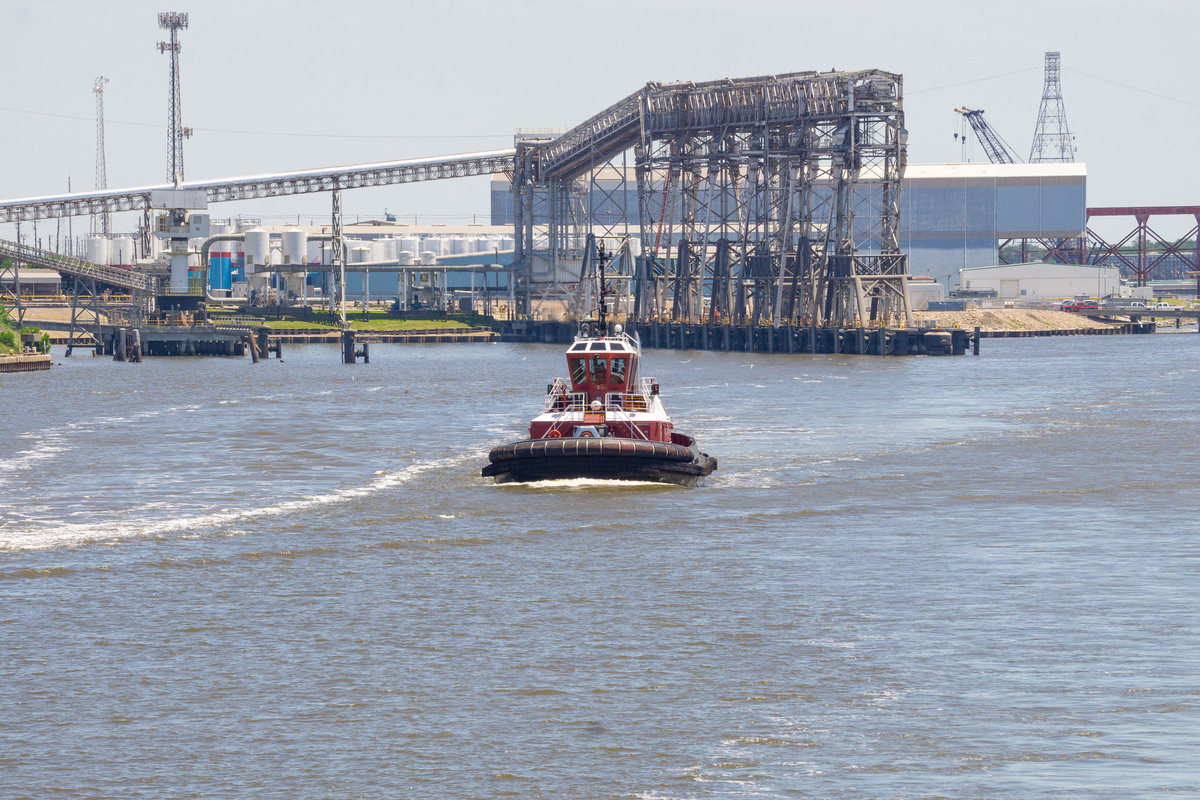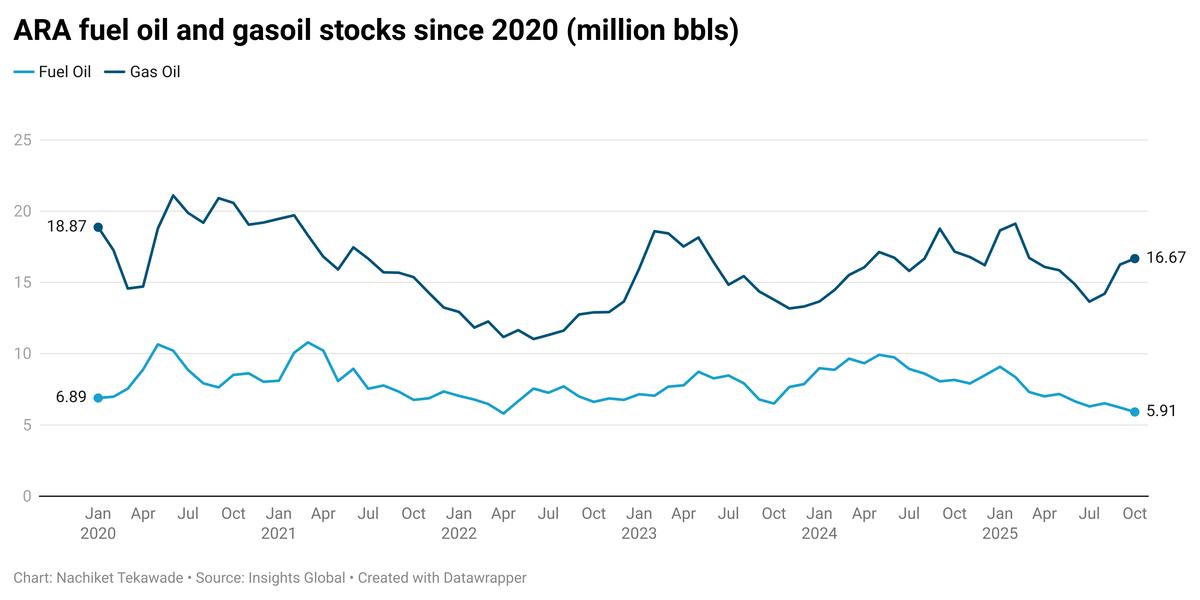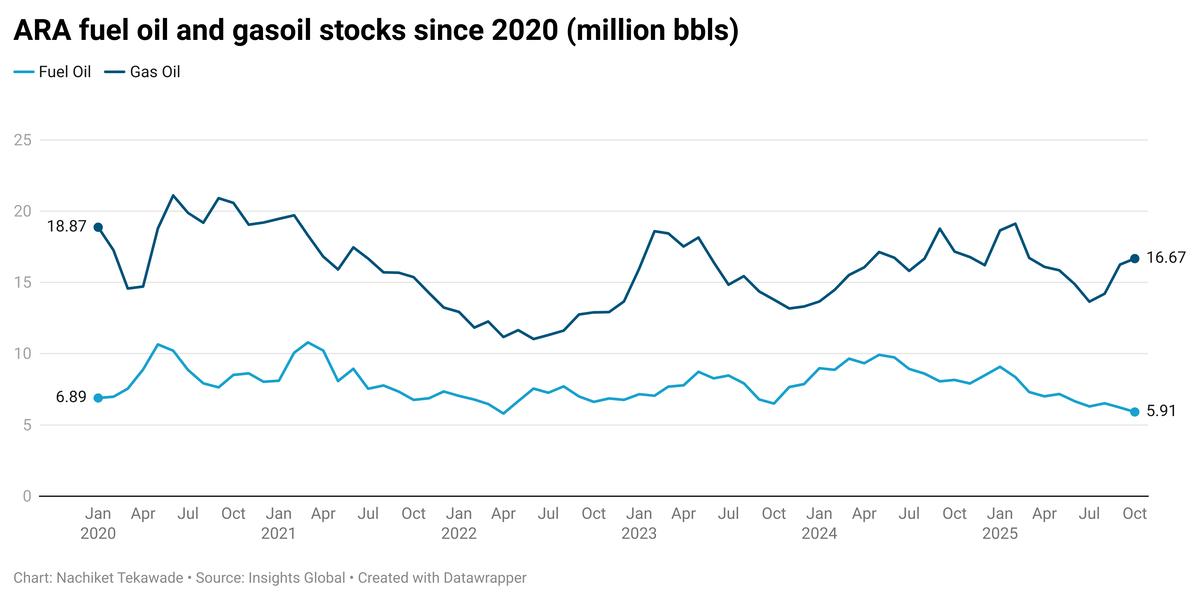Americas Market Update 24 Oct 2025
Bunker fuel prices have shown mixed movements, and an advisory has been issued for tropical storm Melissa in the Atlantic region.
 IMAGE: A tugboat at the Houston harbor. Getty Images
IMAGE: A tugboat at the Houston harbor. Getty Images
Changes on the day to 08.00 CDT (13.00 GMT) today:
- VLSFO prices up in New York ($8/mt), Los Angeles ($6/mt), Houston ($5/mt), unchanged in Balboa, and down in Zona Comun ($2/mt)
- LSMGO prices up in Zona Comun ($12/mt), Los Angeles ($8/mt) and Houston ($1/mt), and down in New York ($21/mt) and Balboa ($3/mt)
- HSFO prices up in Balboa ($9/mt) and Los Angeles ($5/mt), and down in New York ($17/mt) and Houston ($4/mt)
New York's VLSFO price gained the most among the ports and is currently at a premium of $45/mt to Houston, which is almost consistent with the premium it held a month ago.
In New York, bunker fuel demand remains steady for HSFO and VLSFO, while offtake for LSMGO is lower.
The port has a steady supply of fuels this week, with HSFO requiring around seven days of notice, VLSFO around four days, and LSMGO available within 1–2 days.
Houston's VLSFO price has gained by $5/mt, while the port's HSFO dipped by $4/mt, widening its Hi5 spread today to $41/mt, up from yesterday's $32/mt spread.
The port records weaker demand for all three conventional fuels this week, especially VLSFO, which has weighed on prices for the grade, a bunker trader told ENGINE.
The National Hurricane Center meanwhile has issued advisories for the tropical storm Melissa, in the Atlantic region.
Brent
The front-month ICE Brent contract has moved $0.31/bbl higher on the day, to $66.11/bbl at 08.00 CDT (13.00 GMT) today.
Upward pressure:
Brent crude’s price has gained after Washington increased pressure on Russia with major sanctions on Rosneft and Lukoil – two major Russian oil producers, in a move to reduce the country’s revenues that go into funding the ongoing conflict.
The two companies produce more than a combined 5 million b/d of crude oil, or around 50% of total Russian oil production, according to media reports.
“The two companies are the largest producers of oil in Russia, making up nearly half of the country’s total crude exports,” ANZ Bank’s senior commodity strategist Daniel Hynes said.
The announcement comes soon after US President Donald Trump cancelled his plans to meet Russian counterpart Vladimir Putin in Budapest to hold talks for a ceasefire in Ukraine.
The latest US sanctions “mark an important shift” in the US government’s approach towards Russia, according to ING Bank analyst Warren Patterson. It could “potentially having significant ramifications for the oil market,” he said.
Downward pressure:
Brent’s price was under significant downward pressure prior to the announcement of sanctions, as the market was eyeing a surplus through the remainder of 2025 and 2026.
This had “weighed heavily on oil prices, with Brent trading down towards US$60/bbl,” Patterson said.
Besides, supply hikes by OPEC+ producers has weighed on Brent’s price. Earlier this month, eight members of the group agreed to collectively increase their production by another 137,000 b/d in November.
“Lower oil prices create the opportunity to impose sanctions, whilst expectations of abundant supply also provide comfort that the market can manage potential losses in Russian oil supply,” Patterson added.
By Gautamee Hazarika and Aparupa Mazumder
Please get in touch with comments or additional info to news@engine.online




